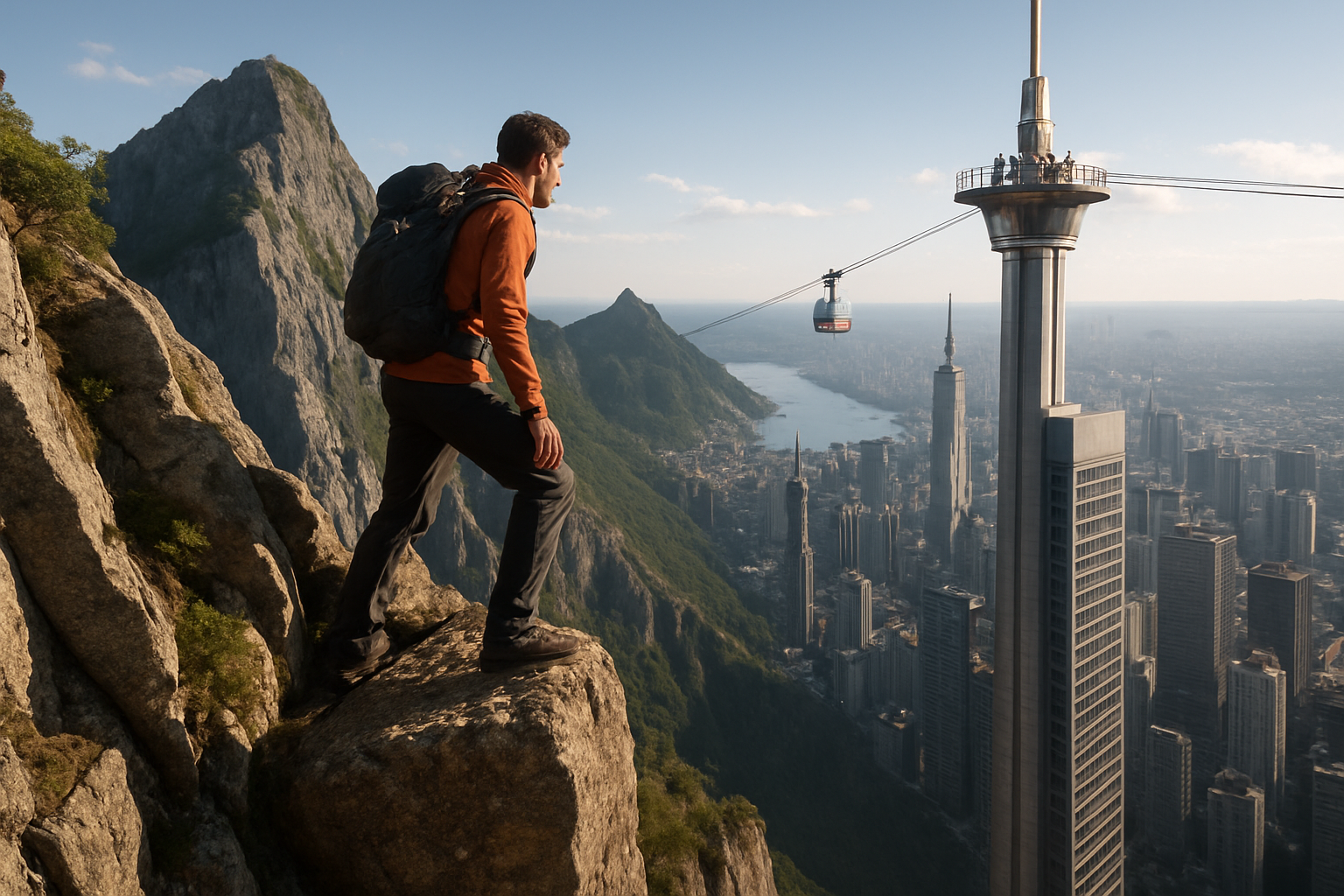Unveiling the Secrets of Vertical Tourism: Scaling New Heights in Travel
The world of travel is constantly evolving, and a new trend is taking adventurers to dizzying heights. Vertical tourism, an emerging niche in the travel industry, is redefining how we explore destinations by focusing on vertical experiences. From scaling skyscrapers to descending into deep caves, this unique form of travel is attracting thrill-seekers and culture enthusiasts alike, offering a fresh perspective on familiar landscapes and hidden wonders.

In recent years, the popularity of vertical tourism has skyrocketed, driven by social media’s influence and a shift towards experiential travel. Cities and natural landscapes alike are being reimagined as vertical playgrounds, offering travelers the opportunity to see familiar sights from entirely new angles.
Urban Vertical Experiences
Urban environments provide a rich tapestry for vertical tourism. Skyscraper climbs, once the domain of maintenance workers and daredevils, are now carefully curated experiences available to the public. Cities like New York, Dubai, and Shanghai offer guided tours to the tops of their iconic buildings, combining breathtaking views with historical insights.
Some destinations have taken urban vertical tourism a step further. In Toronto, the EdgeWalk at the CN Tower allows visitors to walk hands-free around the exterior of the tower’s main pod, 356 meters above the ground. This heart-pounding experience exemplifies how vertical tourism can transform city landmarks into adventure platforms.
Natural Wonders: A Vertical Perspective
Vertical tourism isn’t limited to urban environments. Natural formations offer some of the most awe-inspiring vertical experiences. Canyoning in the slot canyons of Utah, rappelling into the cenotes of Mexico’s Yucatan Peninsula, or ice climbing in the Norwegian fjords – these activities provide a unique way to interact with nature’s vertical landscapes.
One of the most exciting developments in natural vertical tourism is the rise of via ferrata routes. These protected climbing paths, originally developed in the Italian Dolomites, are now found worldwide. They allow even novice climbers to safely navigate steep mountain terrain, opening up previously inaccessible vistas to a broader range of travelers.
The Underground Dimension
Vertical tourism isn’t just about going up – it’s also about going down. Cave tourism, a subset of vertical tourism, is gaining traction among adventure seekers. From the extensive cave systems of Vietnam’s Son Doong to the crystal caves of Mexico’s Naica Mine, underground exploration offers a glimpse into Earth’s hidden realms.
The appeal of underground tourism lies not only in the physical challenge but also in the opportunity to witness unique geological formations and ecosystems. Some caves, like New Zealand’s Waitomo Glowworm Caves, offer surreal experiences that seem almost otherworldly, further broadening the appeal of vertical tourism.
The Impact on Local Communities and Environments
As vertical tourism gains popularity, it brings both opportunities and challenges to local communities. On one hand, it can provide a new source of income and put lesser-known destinations on the map. On the other, it raises concerns about environmental impact and safety.
Responsible vertical tourism requires careful management to ensure sustainability. Many successful initiatives involve local communities in the planning and operation of vertical tourism attractions, ensuring that the benefits are shared and that traditional knowledge is respected and incorporated into the experience.
Safety and Accessibility in Vertical Tourism
Safety is paramount in vertical tourism, and advancements in equipment and techniques have made many experiences more accessible than ever before. However, it’s crucial for travelers to understand their limits and choose experiences that match their skill level.
Tour operators specializing in vertical tourism often provide training sessions and use state-of-the-art safety gear. Some attractions, like the Skyslide in Los Angeles, which allows visitors to slide down the exterior of a skyscraper in a glass tube, demonstrate how vertical experiences can be made accessible to a wide range of visitors.
Insider Tips for Vertical Tourists
-
Always book with reputable operators who prioritize safety and provide proper equipment
-
Start small and gradually work your way up to more challenging vertical experiences
-
Invest in proper footwear – it’s crucial for both safety and comfort in vertical activities
-
Consider your physical fitness and any health conditions before engaging in vertical tourism
-
Respect local customs and environmental regulations when exploring natural vertical attractions
-
Don’t forget to bring a camera with a wide-angle lens to capture the unique perspectives
As we look to the future, vertical tourism is poised to continue its ascent in the travel industry. By offering unique perspectives and pushing the boundaries of traditional sightseeing, it appeals to the growing desire for immersive, transformative travel experiences. Whether scaling urban heights or delving into the earth’s depths, vertical tourism invites travelers to see the world from a whole new angle, promising adventures that are truly elevating.





